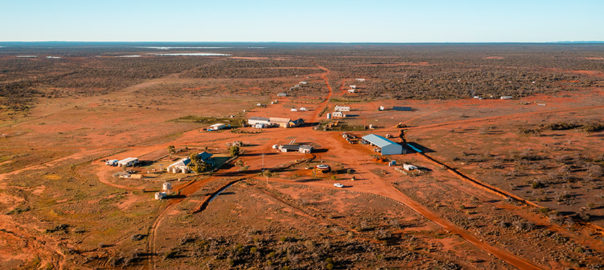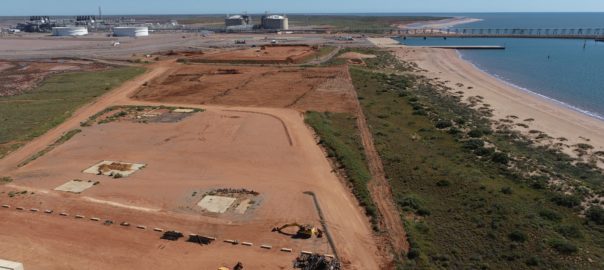Mineral Resources (MinRes) has awarded a A$24 million ($15.5 million) contract to local Indigenous-owned business Djeleanna Pty Ltd as part of the flagship Onslow Iron project, in Western Australia.
The four-year contract is for exploration earthworks at the Ken’s Bore mine site, east of Onslow, including constructing access tracks, building drill pads, road maintenance and general earthworks.
At the contract signing ceremony, Djeleanna owner Bevan Wally (pictured on the right) presented traditional timber gifts to MinRes Managing Director, Chris Ellison (on the left), including boomerangs, a shield and a long stick.
“We are proud to partner with businesses such as Djeleanna that have such a strong connection to Country and this contract is an example of our commitment to empowering Indigenous entrepreneurs,” Ellison said.
“Providing practical guidance and support, such as guaranteeing finance for equipment and plant, helps to build local capability and ensure Indigenous-owned businesses share in our success.”
MinRes General Manager Communities and Heritage, Heath Nelson, added: “Supporting Indigenous-owned businesses has a generational impact by building expertise and skills that can be transferred across other industries for decades to come.”
It is the first contract award for Djeleanna, a Robe River Kuruma business, as well as the largest contract that MinRes has ever awarded to an Indigenous-owned business.
The Robe River Kuruma people are the traditional owners of the land on which the Ken’s Bore mine site is located.
As part of the contract, Djeleanna will employ approximately 10 people, including a project manager, mechanics, operators and administration staff.
Wally, who grew up on Country, said the business was named after a permanent pool on the Robe River in the Pilbara.
“I grew up on stations and have spent time working as a stockman and bull rider and have a deep understanding of this beautiful, ancient country,” he said.
“The support provided by MinRes has given us the confidence and capacity to help establish and grow our business. MinRes have shown us action and given us commitments – it’s unreal for them to invest and give us a go.”
MinRes’ A$3 billion Onslow Iron project is, MinRes says, set to redefine mining in Western Australia, shipping around 35 Mt/y of iron ore from mid-2024. It is owned through the unincorporated Red Hill Iron Joint Venture, which is 40% held by MinRes, who will manage the project, with the other partners being Baowu, AMCI and POSCO.











